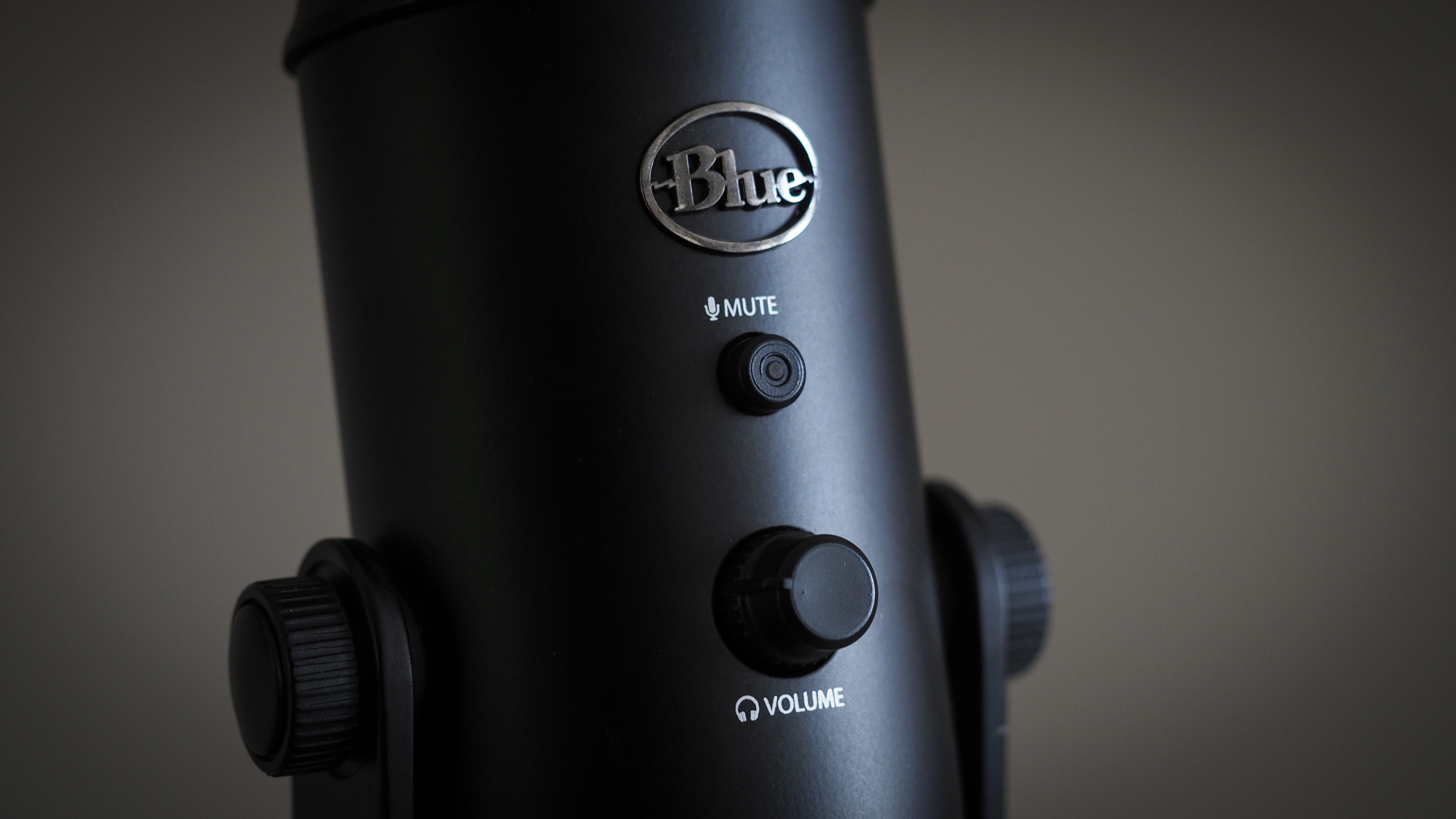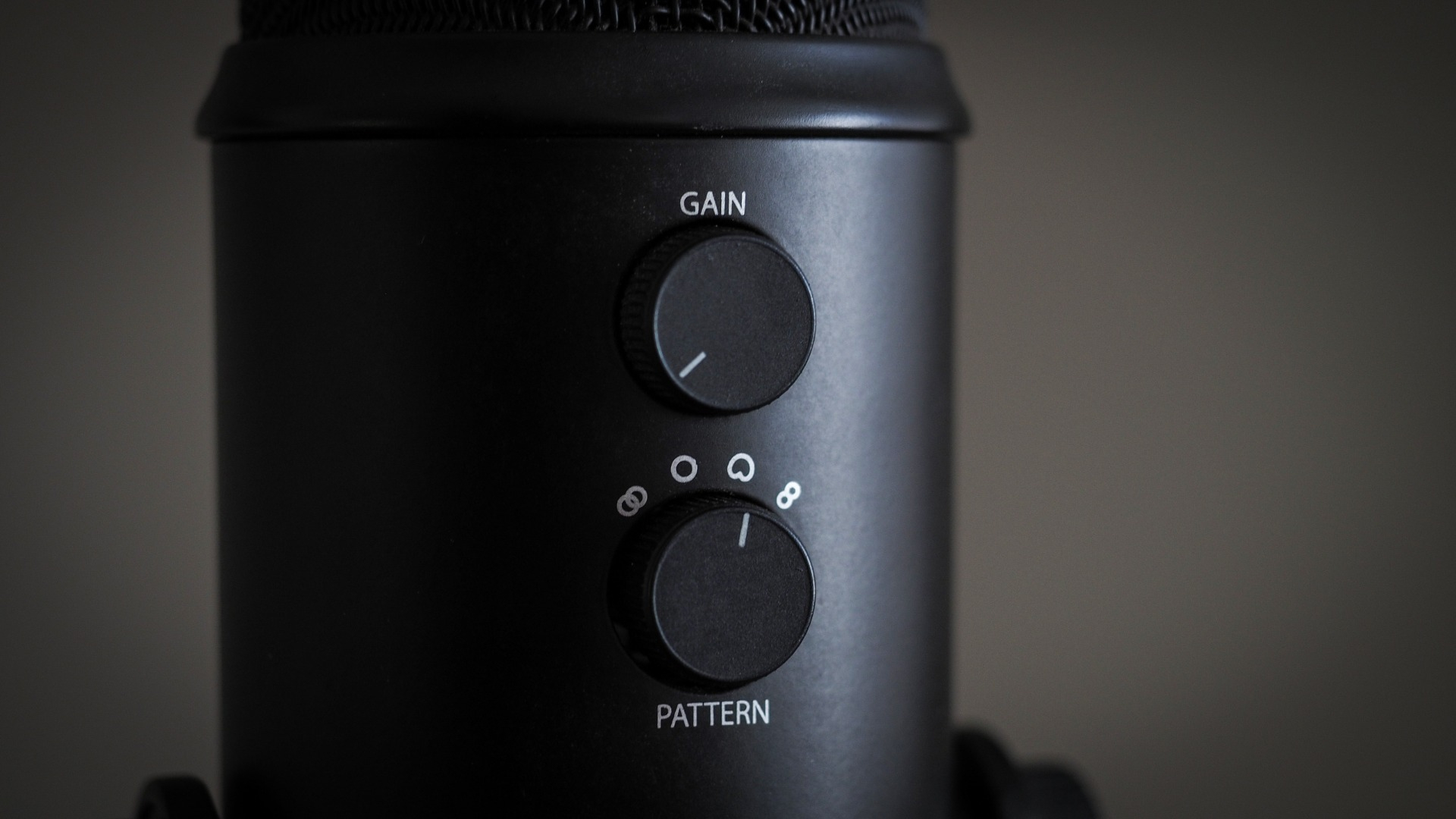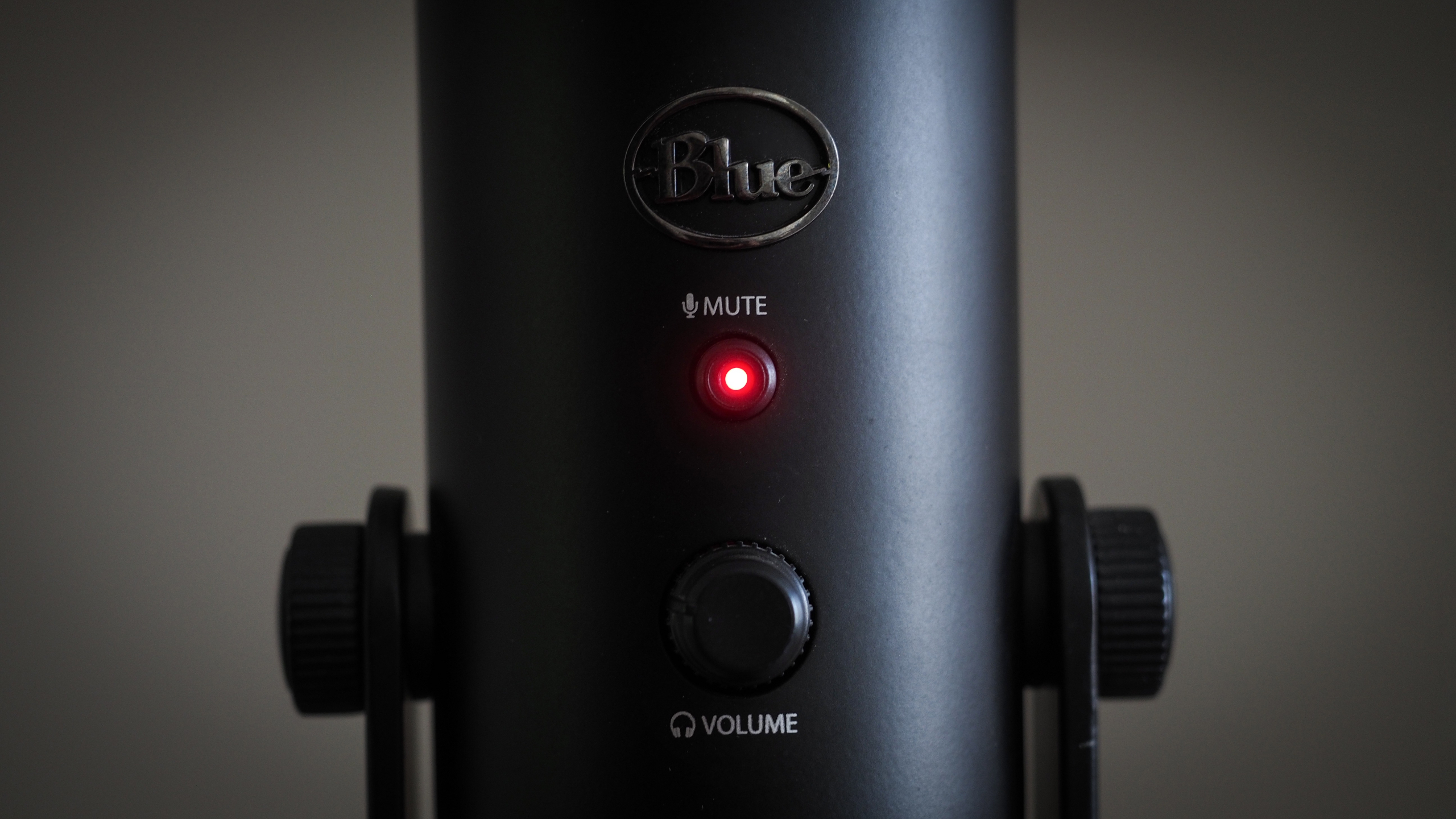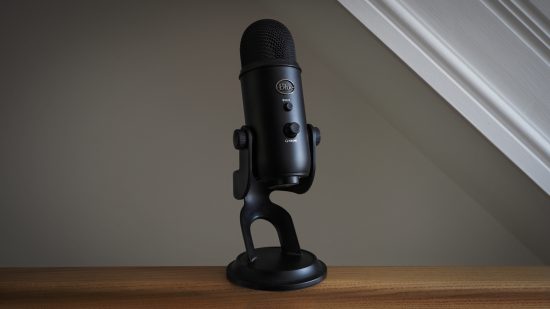Our Verdict
The original Blue Yeti microphone has downsides (a fixed mic stand, mini USB-A connection and no XLR support) but these are outweighed by the neat design, affordable price and great performance. Other options will offer superior sound to a sensitive ear, this is still a broadcast-quality mic that will do anybody’s audio proud.
- Excellent sound quality
- Classic design
- Easy to use and set up
- Fixed mic stand
- No XLR support
- Others offer higher audio quality
The Blue Yeti has long been the microphone of choice in the world of streaming. While it’s now part of the Logitech family, Blue has been a leader in the high-fidelity microphone sphere for almost 20 years – and is trusted by everyone from game streamers and podcasters to sound engineers and professional musicians.
Being brought under the Logitech umbrella immediately put the Yeti on the radar of gamers – an audience who may not otherwise have been familiar with Blue’s heritage, and with why this mic has been held in such high regard for so long. Well, except for a couple of years recently when it fell out of favor.
However, while it’s not the no-brainer choice that it once was, much of the naysaying is pretty misplaced – and the Blue Yeti remains one of the best gaming microphones for gamers who want to enhance their in-game communication, Twitchers, YouTubers, and anyone else who wants to instantly improve their audio to a professional level.
Why you can trust our advice ✔ At PCGamesN, our experts spend hours testing hardware and reviewing games and VPNs. We share honest, unbiased opinions to help you buy the best. Find out how we test.
Blue Yeti specs
These are the Blue Yeti microphone specifications:

Blue Yeti features
The Blue Yeti offers pretty much everything you could ask for from a microphone. It connects via USB, so there is zero hassle in setting it up – you literally plug and play (well, speak while you’re playing).
It has four pickup patterns, and I’ve found these to be versatile options for pretty much all my game streaming needs. The Cardioid is the one you’ll likely use most often, as it picks up a targeted ‘cone’ of sound from a single user sitting in front of the mic. Bidirectional captures sound directly in front of and behind the microphone, making this the option for placing it between two people to capture a conversation.
Omnidirectional records 360° sound from all angles, so this would be the setting for multiple participants in a roundtable-type discussion, while Stereo isolates audio capture into separate left and right channels, depending on where your voice is in relation to the mic, so you get directional playback.
The body of the microphone contains a headphone jack to monitor sound, as well as physical controls to adjust the headphone volume, gain, and pickup pattern, along with a mute button with a recording light. I find this helps me to always know when the mic is on (or off!).
It also (unless you buy a pre-Logitech model on the used market) comes with a software suite called G Hub, containing Blue Vo!ce, which is effectively a virtual board to adjust settings, and also comes with some fun filters and vocal effects.

Blue Yeti design
The Blue Yeti is one of the most iconic-looking mics on the market, with a strikingly classic design that comes in seven colors to suit different streaming setups.
The build quality is incredibly sturdy and robust, too. This is a weighty and substantial microphone with a satisfying amount of heft, thanks to its all-metal construction – especially the rock-solid stand. I’ve never found it wobbling around my desk, yet it’s easy to reposition depending on what else I’ve got on my desk – be it ring lights or streaming cameras.
It’s been thoughtfully designed from a functionality standpoint, with the physical dials as noted above making it quick and easy to make on-the-fly adjustments. It should be noted, however, that the body of the mic carries sound – so if you’re in the habit of tapping, handling, or grabbing the microphone, you will hear audible thuds from your fingertips.
Although the stand makes it easy to adjust the angle of the microphone, the height is fixed and cannot be adjusted. I’ve found that when I need to raise it, I have to prop it up on something. This is very different from mics like the Joby Wavy Pro, which can attach to a boom arm.

Blue Yeti performance & functionality
The Blue Yeti has been the best-selling USB microphone for streamers and content creators for years, for one simple reason: it’s just plain good. It also just plain works; simply connect it to your setup and start speaking. You don’t even need to download the software, as the gain and pickup patterns are selectable from the mic itself – and the integrated headphone jack keeps everything at your fingertips.
Now, to the falling out of favor that we mentioned at the start of this review: a couple of years ago it became very fashionable for content creators to bash the Yeti, and the backlash seemed to be twofold.
Firstly, a more contemporary (and quite fair) reaction came from modern streamers balking at the Yeti’s reputation as “the best mic on the market”. Then there was a separate reaction from a school of creators who simply seemed to be using the microphone wrong, and getting bad results.
To the former point, yes – times have changed since the Yeti first hit the market. In 2009 it was the only USB mic, and the only one offering anything resembling professional audio quality. So it was the best and only option, and that reputation carried with it for years.
Since then, though, the market has caught up, and there are plenty of USB mics – some of which offer better audio quality. Indeed, teardowns of the Yeti reveal that it uses very basic capsules – the same ones it used upon launch in 2009 – but they simply don’t compare to the advanced capsules in modern mics.
That doesn’t mean that the Yeti is any less capable, though! It is not the best, but it is still very good. And to this day, components notwithstanding, it delivers audio quality superior to most mics in its category – and on par with several more expensive, higher-level options.
That is, provided you use it correctly! Given that this is a microphone picked up by newcomers to “proper audio”, many people simply don’t know how to use it (or, indeed, any more advanced mic). For 90% of users, the best advice is to set it to Cardioid, turn the Gain dial to 9 pm, and talk into the front of the microphone (with the Blue logo facing you) – not the top or the back! When I do just this, I never have any issues with clarity, volume, or echoes.
A fair criticism is that the connection is a Mini USB A, which is less than ideal. Logitech completely redesigned the circuit board when it bought Blue, which would have been a great opportunity to update to USB-C. I use an adapter with my Blue Yeti, so it’s not a dealbreaker.
Where to buy the Blue Yet
The Blue Yeti microphone is available from major retailers like Amazon, and directly from Logitech. These are the best prices:
Should you buy the Blue Yeti?
- Yes: The Blue Yeti’s build and audio are very good
- Yes: The Blue Yeti is affordable and great value
- No: The Blue Yeti does not have the best audio
How can the Blue Yeti be our favorite streaming microphone if it doesn’t have the “best audio quality”? Because it still delivers very good audio, for a very reasonable price, in a beautifully designed package that is built to last. I have a Yeti from 2009 that is still going strong.
If you’ve never used a dedicated microphone, and are coming from webcam or headset audio, this is an absolute no-brainer: the leap is night and day, and will immediately transform the quality of your stream. Even though other options offer superior sound to a sensitive ear, this is still a broadcast-quality mic that will do anybody’s audio proud.
If the Blue Yeti isn’t for you…
If the Blue Yeti isn’t the best streaming microphone for you, we’ve also listed a few of our favorite alternatives at different price points.
Read our list of the best gaming headsets and the best wireless gaming headsets for more ways to communicate with your fellow gamers and viewers.
